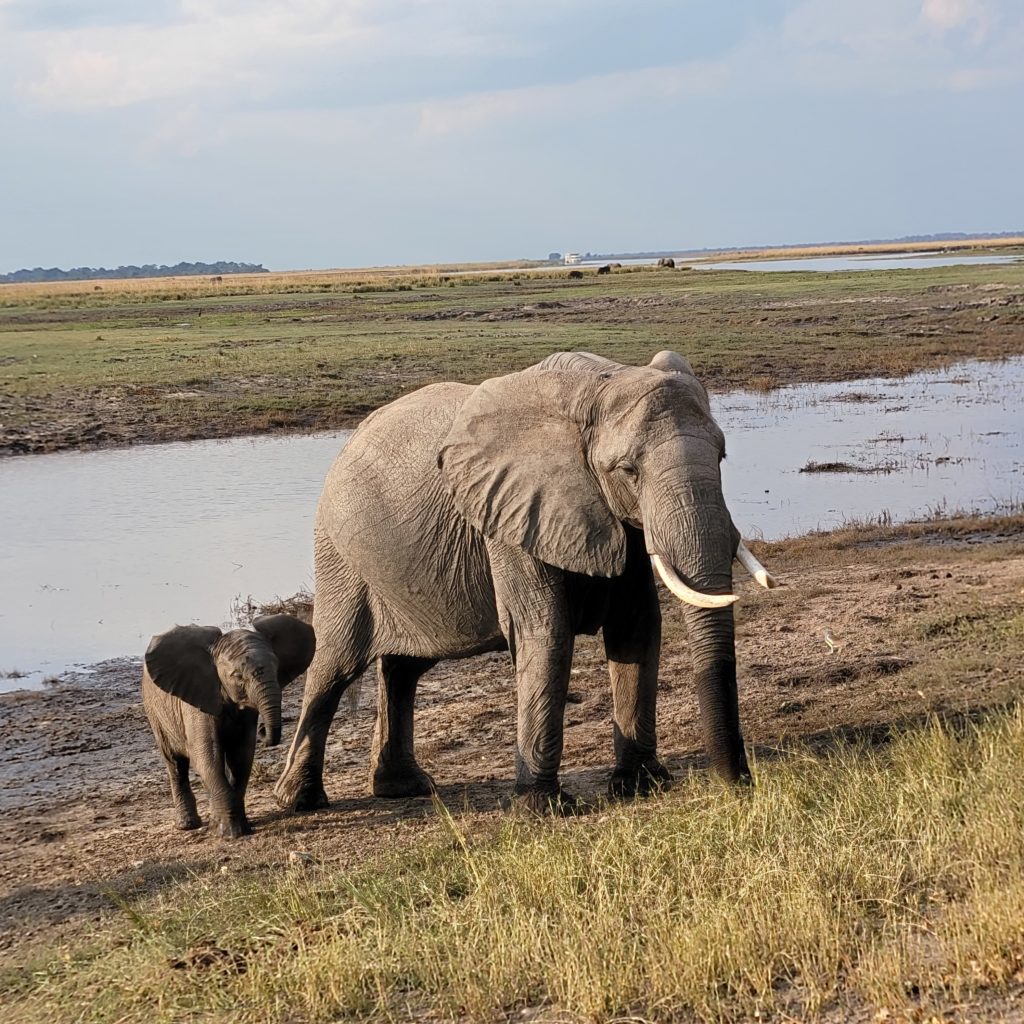
Wow, if all this happened on the first day, what else are we going to see! I thought we’d be lucky in 7 weeks to see all we saw today on two game drives. And they weren’t even drives we have scheduled as part of our safaris, just random trips with the lodge where we’re chillin’ until we move tomorrow. Our host Lloyd told us when we arrived we should do both a morning and an afternoon game drive because we’d see different things. And he was right.
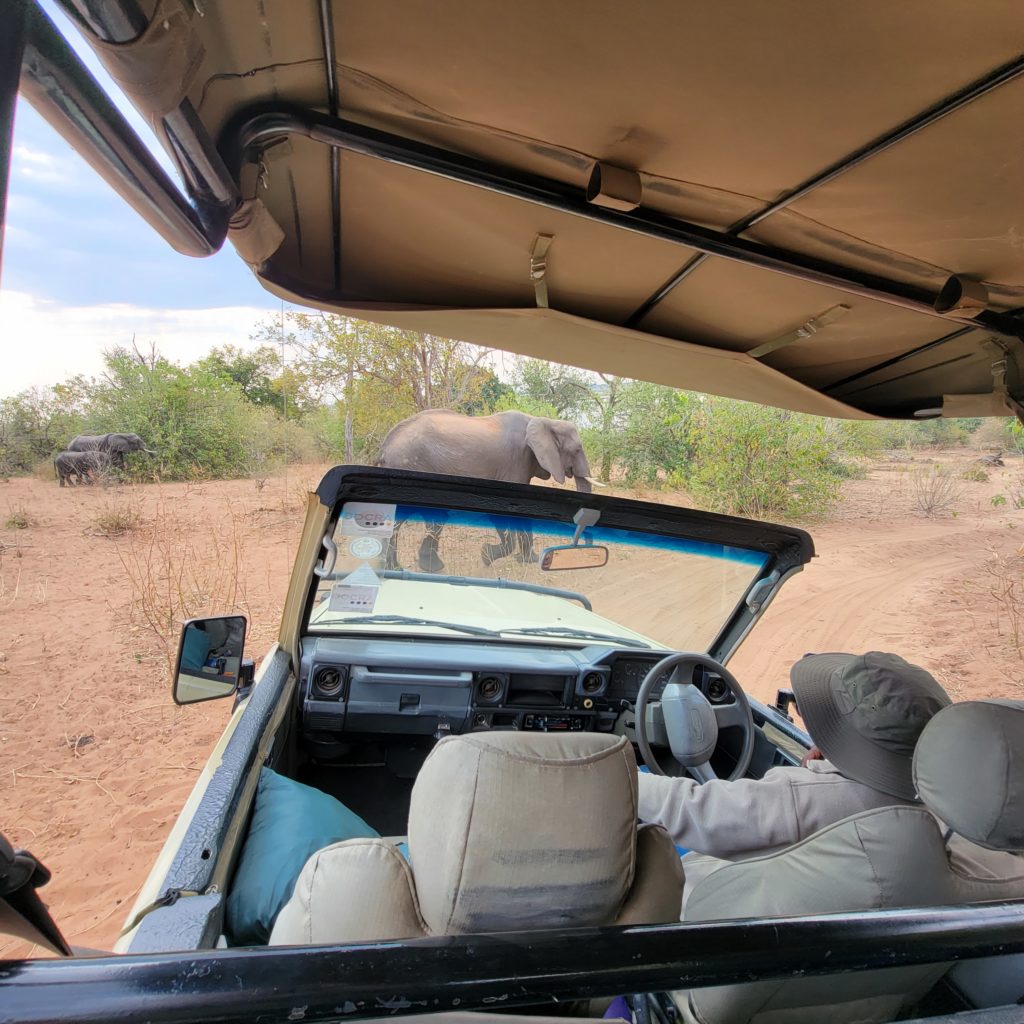
What he didn’t tell us was that when Joe (the guide) says “This is a breeding herd of elephants”, that you need to be very alert to what’s happening. When mama and baby get in front of the truck, and put you between her and the big bull elephant, things are not going to go well. Especially since mama and baby are in the road you need to drive down to escape the now charging bull. And then mama starts screaming, which is not helping anything. I have no video of this, but the memory remains vivid. Joe told us it was what they call a “Mock Charge”. A real charge means his ears are back, and his trunk and tail are high in the air. I did not see what he looked like because once I realized what was happening I just looked straight ahead toward the escape route. Literally, the bull was only feet away from the truck.
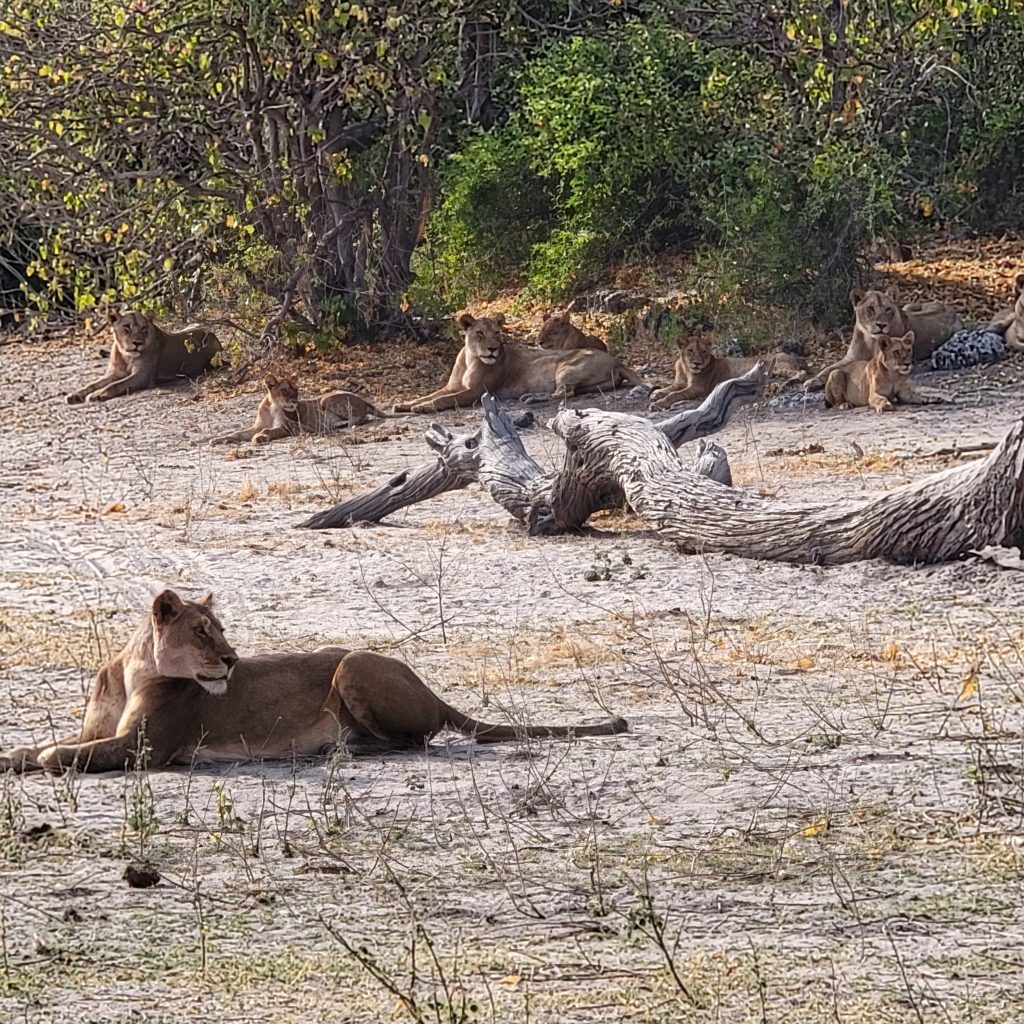
But besides a crabby bull elephant (Joe says never trust the bulls, ever), we saw so many amazing things. I can’t even begin to name all the stuff we saw, but there will be lots of research in the coming days as I try and put labels on all the pictures. What I do know is that the pride of 13 lionesses and cubs was a very rare sighting. They are of course very nocturnal hunters, and all were tired, but chose today to lay out in the open and take naps where we could see them. Apparently there are about 70 lionesses and cubs in this area, and they split up into groups of usually about 20 or so. They’re all very accustomed to the game trucks, and paid no attention to us at all. And they’re also very well fed, not a rib showing on any of them.
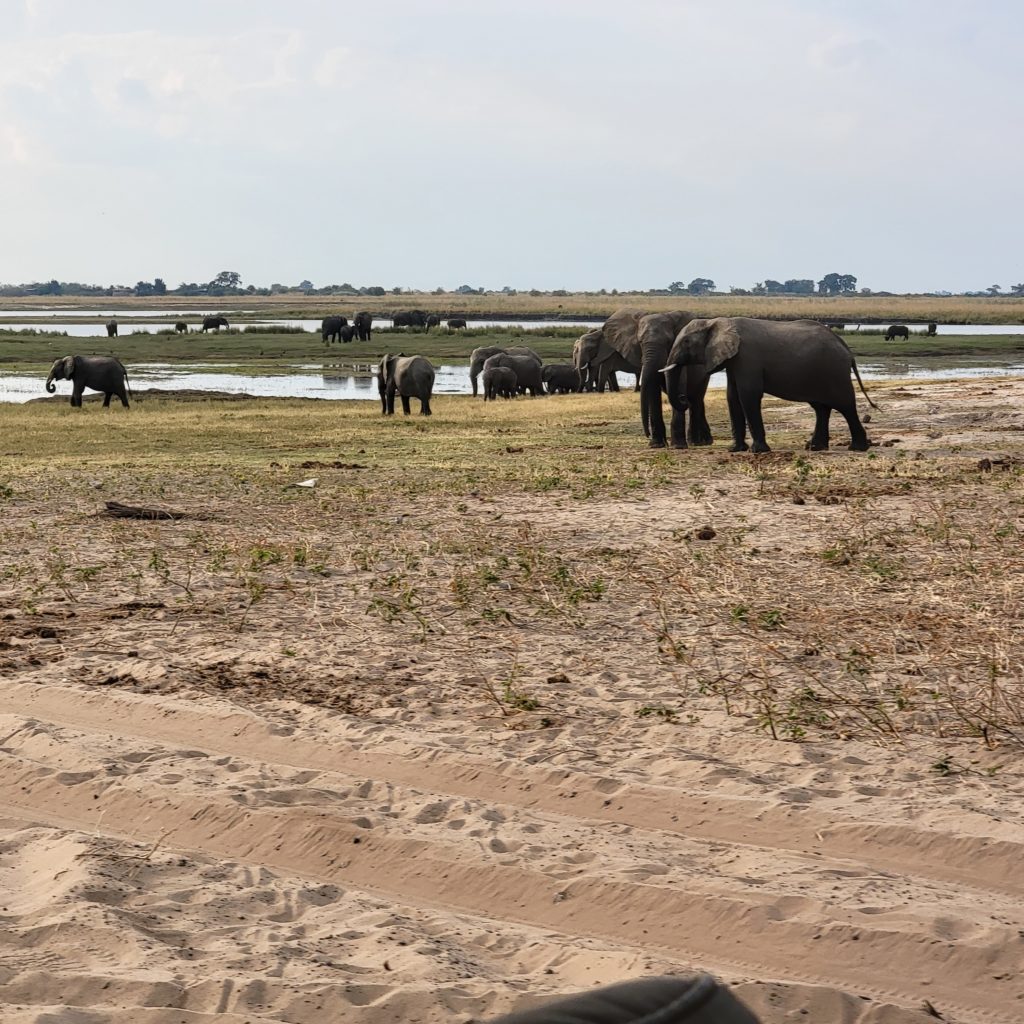
We learned a lot today about the herds and relationships between the elephants. Botswana is home to 130,000 elephants, and more than 50,000 live in Chobe National Park. We’re told that in the rainy season you’ll see the entire river floodplain covered with thousands of elephants. There are so many there that the babies get lost from their mothers and their herd. But since elephants are very emotionally sensitive animals, another herd always takes care of the lost baby until it finds its way home again. At about age nine the baby boys start having, shall we say, inappropriate feelings for siblings and grandma (eek), so mom throws them out of the herd. They hang around for a few years in close proximity, but eventually find others to make another herd with.
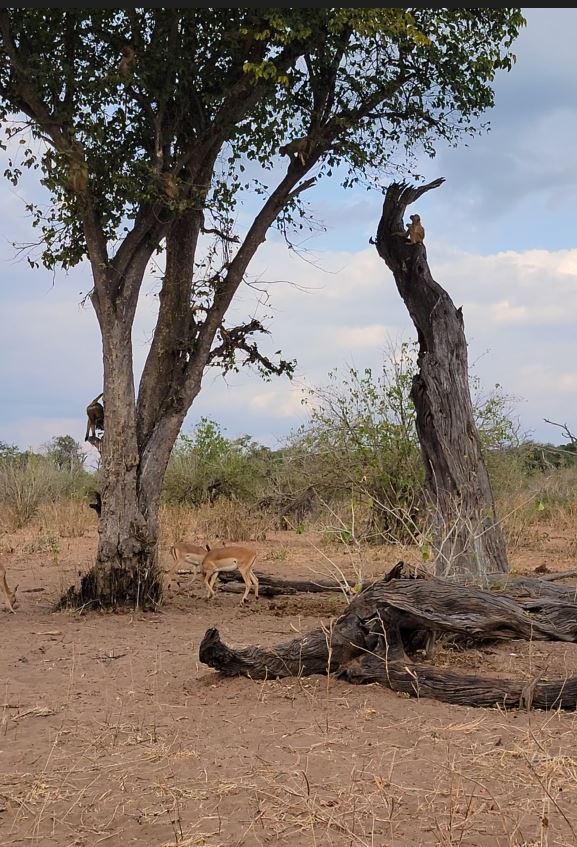
We also learned about the symbiotic relationship between impalas and baboons. The baboons eat leaves from high in the trees, where they can easily climb. The impalas feed on the dead leaves that fall to the ground. The baboons will sit in the trees and throw down dead leaves at the group of impalas eating below. The impalas are apparently good lookouts and let the baboons know when a predator is close enough to be dangerous.
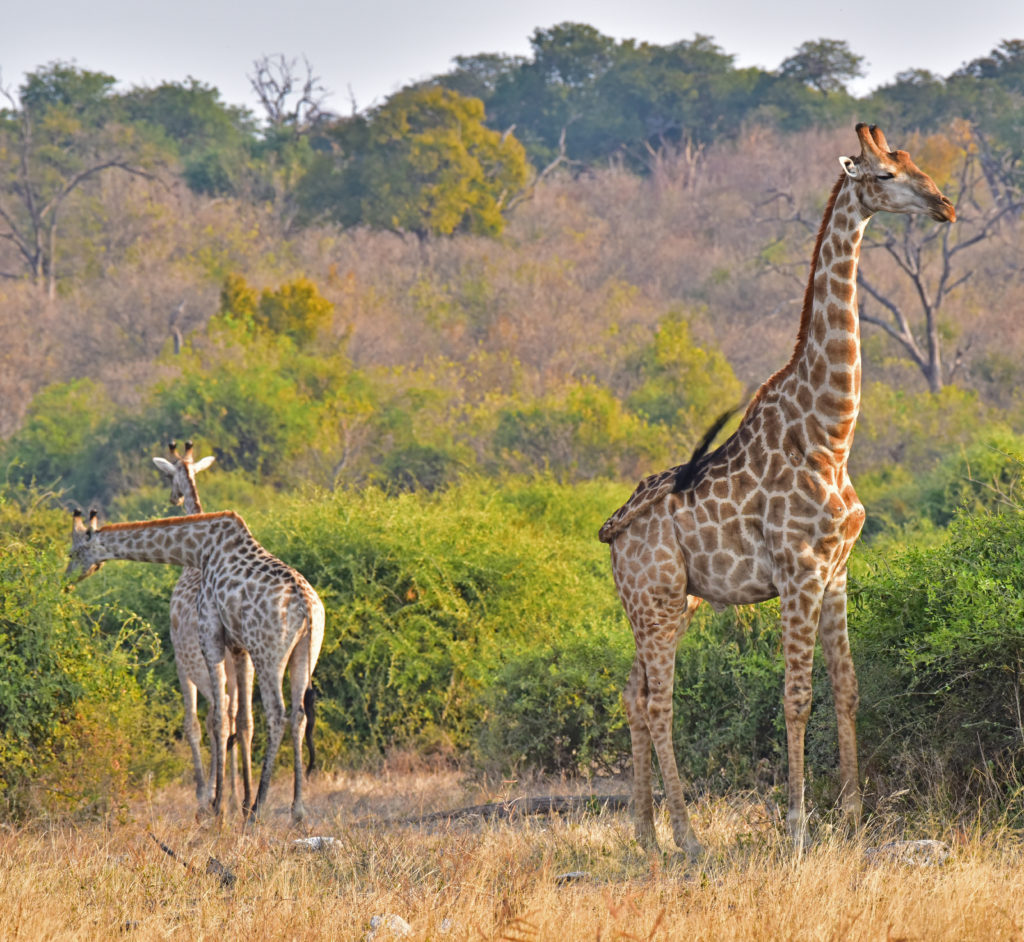
I’ll end this post with a pic from Rob of some giraffes. Tomorrow we move to the fancy Chobe River Safari Lodge and begin our first official safari trip. Somehow I think we’ve just scratched the surface, and it was only day one.
Photos from today: